Are you looking for gorgeous ecological landscape design ideas. There are experts from all over the world who can design designs suited to your style, budget, and lifestyle. Your garden can become environmentally green by planting flowers that draw pollinators and avoiding using pesticides or others. Alongside creating stunning landscapes and stunning outdoor areas, landscape architects and designers can ensure that the gardens we create are eco-friendly and sustainable. We talked to various landscape architects who spoke about how rain gardens can transform grasslands into meadows native to the region, resulting in low-water gardens and other ways to create beautiful eco-friendly gardens. Check out the 12 steps for creating an eco-friendly landscape. What are you thinking of using to ensure you have an environment within your own home?
1. Reclaim spaces instead of tearing them down
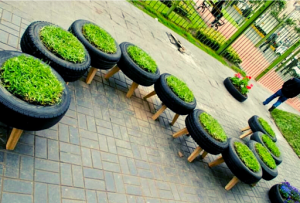
If you’re only getting started with your garden transformation, its tempting to remove everything and start your project by starting over. But replacing each plant or structure, including hardscapes and the plants could lead to more expense and resource loss. If you are able, look into ways to design new spaces and reuse existing materials. Instead of demolishing the old and degraded parts of the barn, the silo was never used and was discarded. So, the architects have turned the old structures into new walls and a tennis court making sure concrete trucks remain in the area and away from the garbage.
2. Utilize locally-sourced and recyclable materials
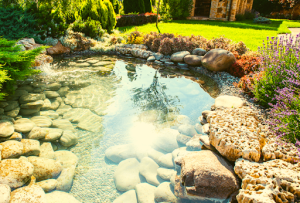
Next landscape design ideas include utilization of locally sourced and recyclable materials. If you’re planning to invest in new construction or hardscape materials for your landscape garden design, ensure that you choose sustainable and locally sourced products. Locally-sourced materials require less transportation and are more cost-effective than materials from other resources. This reduces carbon footprint and makes them cheaper for homeowners.
3. Make sure you mention the source of the water
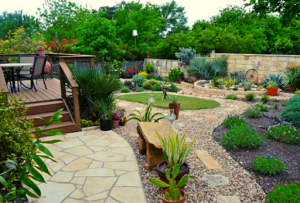
The water features of every kind like fountains, birdbaths and birdbaths. Backyard ponds attract wild animals to drink and bathe. So, this is particularly important in cities, suburbs and areas where drinking water sources are almost gone.
The design team responsible for this backyard took it one step further, accommodating wildlife with an incredible aquarium, with water-loving plants on the edges.
4. Utilize local native plants

The native plants of your area can help connect your garden with larger ecosystems and attract wildlife. This reduces the requirement for fertilizers or water since the plants native to your region are well-adapted to local conditions, ecosystems, and climate. So, they also create beautiful and vibrant gardens. If you are beginning to play around with native plants and are the best landscape design ideas, sustainability experts and landscape designers.
5. Plant flowers that will attract pollinators within your yard.
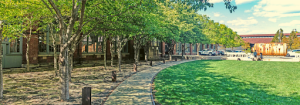
If there’s no native garden, make sure you plant specific plants that provide a suitable habitat for bees, birds, and butterflies in the gardens that support the local wildlife. If you choose to choose flowers to attract pollinators, bees, and butterflies typically, they’re set in clumps or bands, which make them easy to spot from a distance.
There’s a rooftop garden. The landscape design ideas of Kevin Clare used the rows of yarrow in magenta as along as yellow valerian. Both are highly sought-after by insects and butterflies to add color and draw pollinators to cities.
6. Harvest rainwater
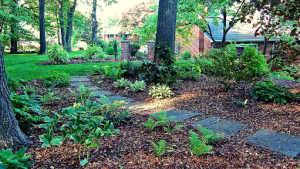
The capture of rainwater could help conserve water even on a small scale. This garden is has a handy hose connection that allows you to effortlessly distribute water to gardeners in summer when it is dry.7. Plan your garden so that you can avoid the rain. Garden
In the case of rain, gardens direct the storm water towards the hollow, shaded part to let it slowly dissolve in the earth. This is not the case with storm water drainage systems that take the water away from the region.
8. Utilize permeable hardscapes
It is essential to make sure that whatever material you pick for your hardscape permits water flow to it. This is a different way to ensure that rainwater isn’t be absorbed by the landscape. In the case of Melbourne gardens, gardener’s part of bayon gardens used permeable paving to create patios and pathways. Wooden pieces can aid in the process and provide an area to sit and rest your feet.
9. Eliminate pesticide use
Enhance the overall health of your garden design and the surroundings around it by attempting to clean the area of any chemical pesticides. The use of pesticides on landscapes isn’t just harmful to insects, but also beneficial to ones like butterflies and bees that depend on pollination. Instead of spraying your plants with chemicals, an approach that is not as concerned about managing insects.
10. Utilize green waste to good use
Instead of throwing grass clippings and lawn debris in the garbage can, set up composting facilities. Compost is a vital organic matter that can enhance soil texture and provide nutrition. It is a fact that healthy soil is crucial for healthy gardens. It will aid in gaining experience and preventing the pile from growing to the top. To help the bay area clients in this project, arenas set up an ordinary three-compartment bin to rotate to the compost while it degrades.
11. Install a lawn on the naturalistic meadow
If you’re considering cutting the lawn from your old style or cutting down on the area of it, check out the meadow. Its natural and created to give you some ideas. It’s a mixture of concepts we’ve discussed, such as native plants and those that are pollinator-friendly. It will make sure that rainwater is readily available, making it less expensive to purchase more maintenance or water to make stunning backyard designs.
12. Be sure to clear the area wild
Be careful when planting flowers throughout your yard, especially when you’re lucky enough to live in the most significant part of the landscape. Suppose you do not leave the boundaries of your garden uncultivated. In that case, it is possible to create wildlife corridors that let animals roam free throughout suburban and urban zones with resting spots and feeding areas, and shelter.
Conclusion:
Although many view green as a hue, it could also reference many environmental concerns. From recycling to reducing energy use to the use alternatives to energy, green is a vital part of the lives of millions of people around the world. We hope you’ve thought of some these landscape design ideas that will assist in making a difference in the world’s community.
READ NEXT:Bright Layouts and Easy Decoration Ideas for Your Winter Garden
RELATED TOPICS: landscape garden


